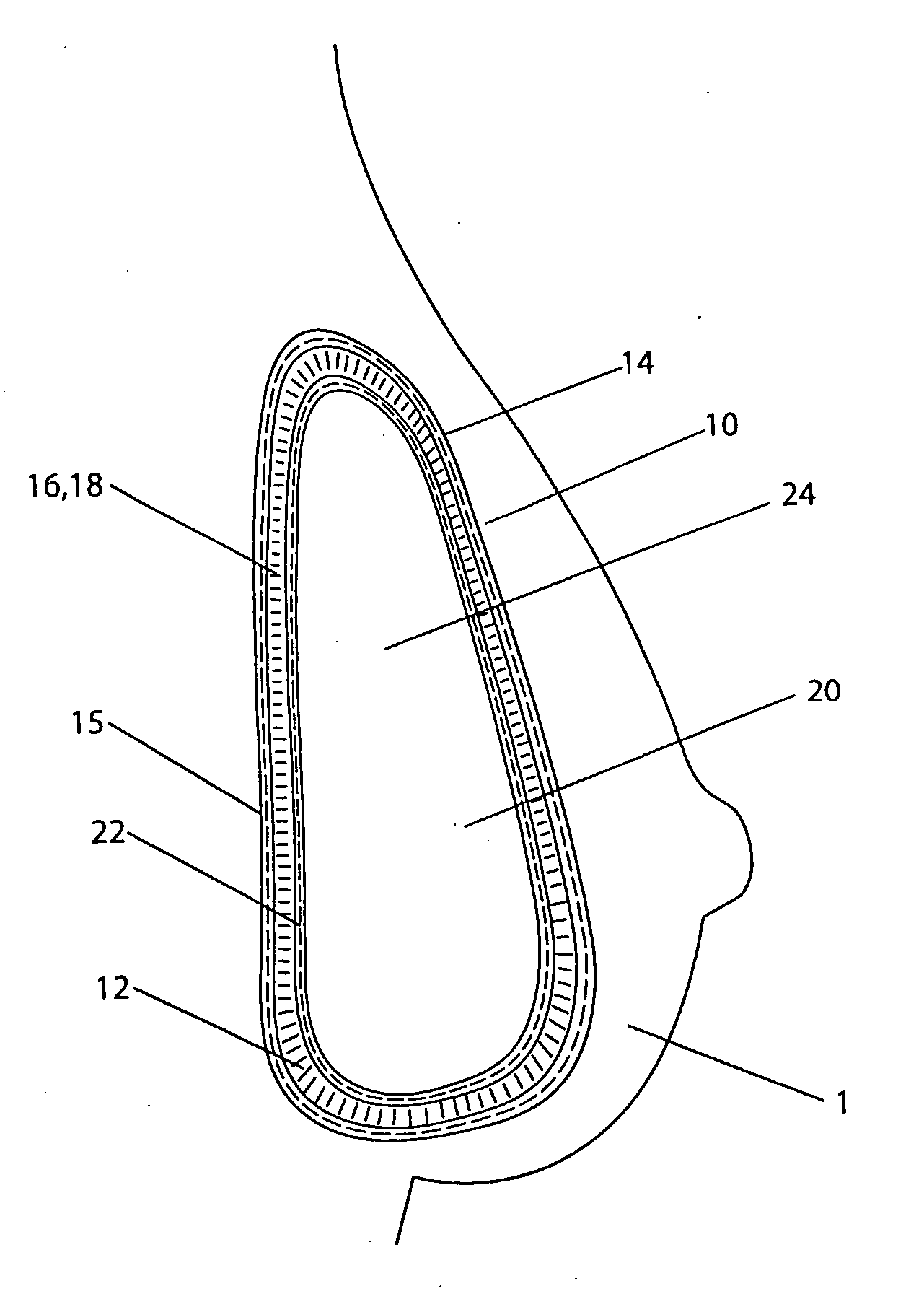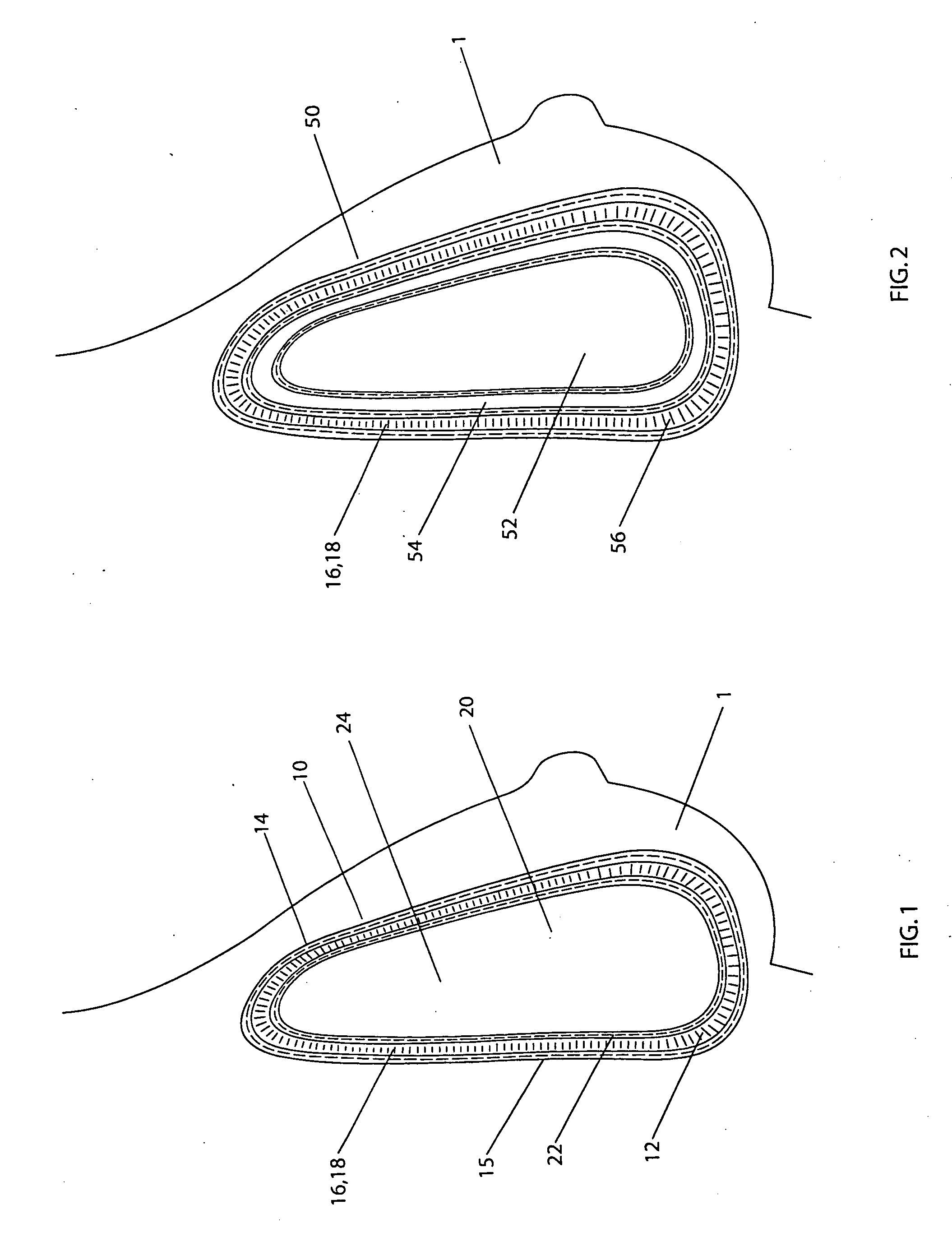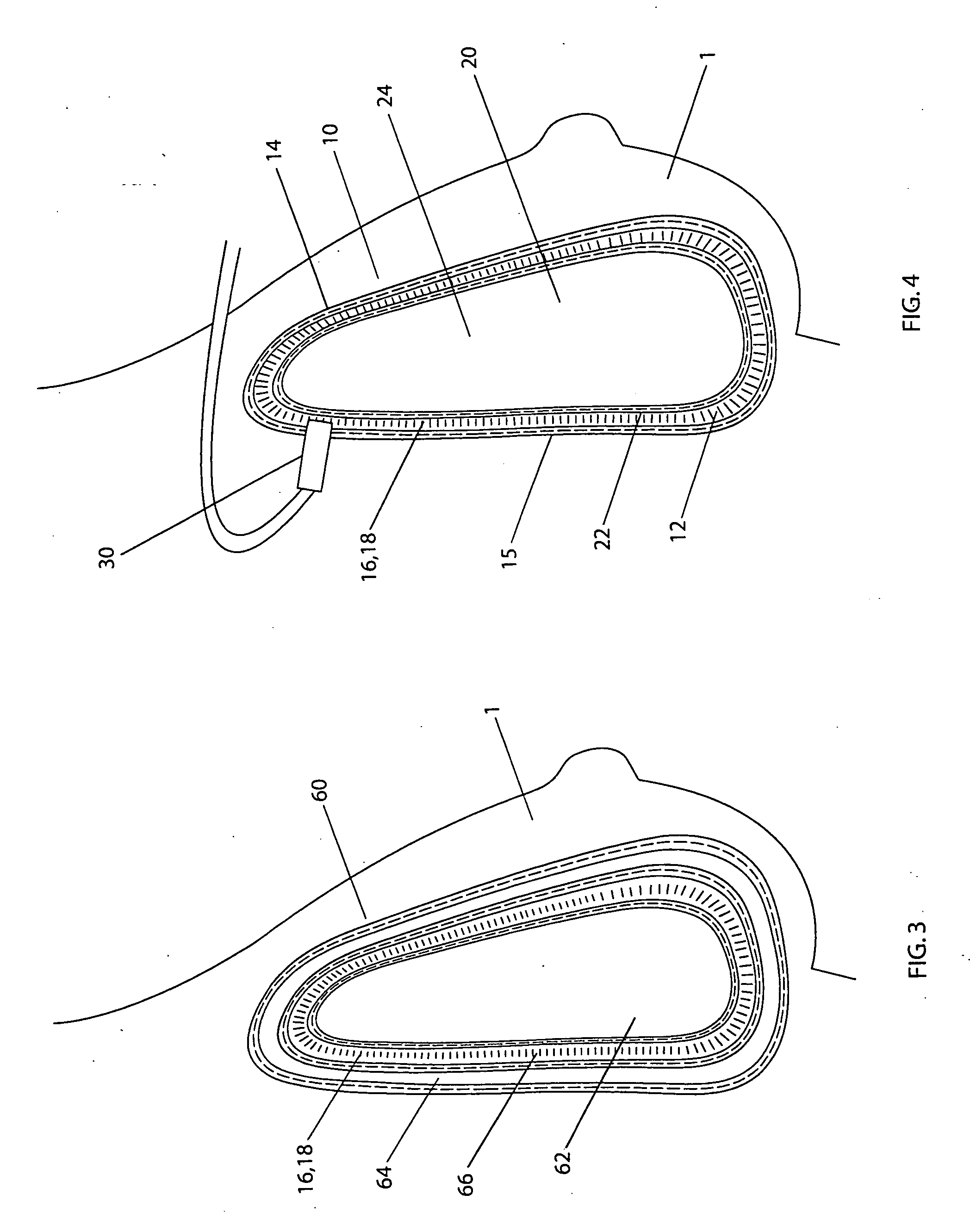Cosmetic and reconstructive prosthesis containing a biologically compatible rupture indicator
a technology of rupture indicator and reconstructive prosthesis, which is applied in the field of reconstructive prosthesis, can solve the problems of silicone bleed or leakage out of the shell of the implant, the inability of the implant to mimic the elasticity, feel and movement of the natural breast tissue, and the inferiority of saline-filled breast implants in terms of mimicking the elasticity of the breast tissue, so as to reduce the diffusion of silicone filling material and enhance the strength of the envelope
- Summary
- Abstract
- Description
- Claims
- Application Information
AI Technical Summary
Benefits of technology
Problems solved by technology
Method used
Image
Examples
example 1
[0057] A double lumen breast implant having a structure shown in FIG. 1 has a silicone gel commonly used in the breast implant as the filling material inside the internal lumen 20. The external lumen contains from about 35 to about 45 ml of sterilized aqueous solution of methylene blue. The methylene blue is in a concentration range from about 1 mg / ml to about 4 mg / ml. With the concentration and volume of the methylene blue described, it is in a range from about 1 to about 2 mg per kilogram of body weight for an average female (from about 50 to about 70 kg). In the event of rupture, the methylene blue solution leaks out from the external lumen into the tissues where it is absorbed into the vascular system, metabolizes in kidney, and releases to urine, which causes a color change of the urine.
example 2
[0058] A double lumen breast implant is constructed having a general structure shown in FIG. 1. Both internal and external envelopes are made of silicone elastomer currently used for breast implant. More specifically, the internal envelope 22 can be constructed of the low diffusion shell produced by INAMED Corporation (Santa Barbara, Calif.). The internal lumen 20 is filled with a cohesive silicone gel currently used in breast implants in some countries. The external lumen 12 contains from about 35 to about 45 ml of sterilized aqueous solution of phenazopyridine hydrochloride. The phenazopyridine hydrochloride is in a concentration range from about 2 mg / ml to about 17 mg / ml. With the concentration and volume of the phenazopyridine hydrochloride described, it is in a range from about 1.4 to about 12 mg per kilogram of body weight for an average female (from about 50 to about 70 kg). In the event of rupture, the phenazopyridine hydrochloride solution leaks out from the external lumen ...
PUM
 Login to View More
Login to View More Abstract
Description
Claims
Application Information
 Login to View More
Login to View More - R&D
- Intellectual Property
- Life Sciences
- Materials
- Tech Scout
- Unparalleled Data Quality
- Higher Quality Content
- 60% Fewer Hallucinations
Browse by: Latest US Patents, China's latest patents, Technical Efficacy Thesaurus, Application Domain, Technology Topic, Popular Technical Reports.
© 2025 PatSnap. All rights reserved.Legal|Privacy policy|Modern Slavery Act Transparency Statement|Sitemap|About US| Contact US: help@patsnap.com



